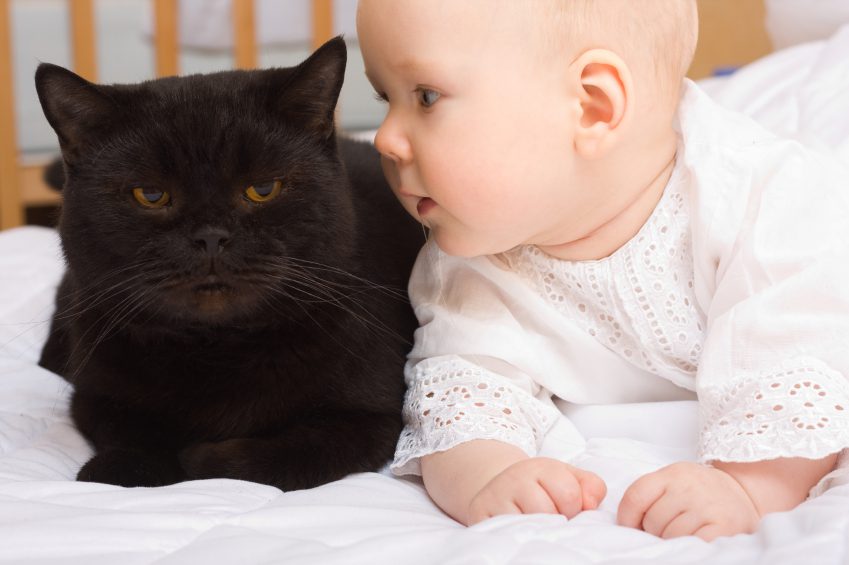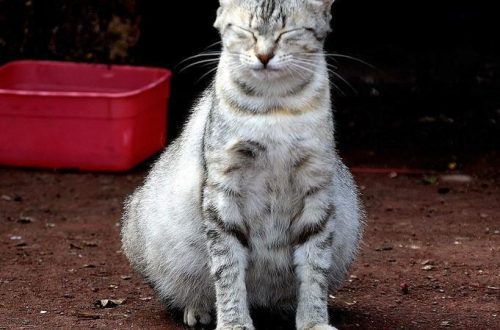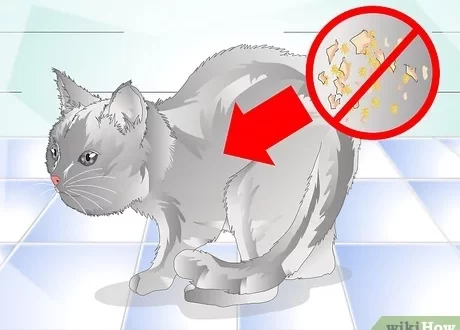
Cat and newborn baby
If there is anything worse than moving, it is moving with a cat. However, with proper planning of this process, everything should go smoothly. Cats develop strong attachments to their environment, so moving is a potentially stressful situation. Planning ahead ensures that moving from your old home to your new home goes smoothly. After all, it’s stressful for you first of all, so it’s good to have one less problem.
moving day
· Before the van arrives, it is recommended to close the cat in the room – preferably in the bedroom.
· Bring a cat carrier, bedding, food and water bowls, and a litter box to this room and make sure all windows and doors are tightly closed.
· Post a sign on the room door for movers and family members to not leave the door open.
· Furniture and belongings from the bedroom should be loaded into the van last, when everything from other rooms has been taken out. Before moving furniture out of the bedroom, put your cat in a carrier and take it to the car. The journey to a new home has begun!
When transporting your pet, follow the tips below:
· In the new house first of all it is necessary to transfer furniture from a bedroom.
· In the room where your pet will temporarily stay, place an automatic feline pheromone dispenser at floor level (feliway refills can be purchased at your veterinary clinic). Once the room is ready, you can place the cat, her bed, food and water bowls and the tray in there, and then close the door tightly. If possible, have one of your family members stay in the room with your pet while he is exploring a new place.
· Offer your cat some food.
· At the end of the move, you can let your pet gradually, room by room, explore the new home.
It is important to remain as calm as possible yourself so that your cat feels safe.
· Make sure all outside windows and doors are closed.
· Make sure that your cat does not sneak into the kitchen or utility room unnoticed – especially impressionable animals seek refuge in narrow cracks behind household appliances.
· If your cat is particularly impressionable, it is recommended to put her in a cat hotel the day before the move and pick her up the day after you settle in your new home.
How to transport your cat
· If your cat is not prone to travel, talk to your veterinarian in advance – they may prescribe a mild sedative.
· Feed your pet as usual, but make sure that on the day of the move, he ate at least three hours before the trip.
· Transport your cat in a secure container – a basket or a special carrier.
· Spray the inside of the carrier with synthetic cat pheromones (Feliway, Ceva – you can get these from your veterinarian) half an hour before you put your cat in.
· Place the carrier on the seat and secure it with the seat belt, behind the seat or in the back seat, making sure it is securely fastened so that it cannot tip over.
· Do not transport a cat in a cargo van or in the trunk of a car.
· If the journey is long, you can stop and offer your pet water or the opportunity to use the litter box, although most cats will not need this.
· If you are traveling on a hot day, make sure the car is well ventilated, never leave your cat inside a sun-heated car when you make a stopover.
How to help your cat get used to a new home
· Keep your cat out of the house for at least two weeks until she gets used to the new environment.
Feed your pet often in small portions.
· Follow the old daily routine to create familiar conditions for your pet in a new home.
· Try to make your cat feel safe in the new home. This can be achieved by spreading its smell throughout the house: take a soft cotton towel (or thin cotton gloves) and rub it on the cheeks and head of the cat – this will increase the activity of the glands located on the muzzle. Use this towel or gloves to rub the corners of doorframes, walls and furniture at the height of your cat – then she will quickly master the new territory. Do this daily until you notice that the cat itself rubs against objects in the house.
· Continue to use Synthetic Cat Pheromone by placing the diffuser in various corners of the house, room by room.
· Household cats need extra attention, as the new environment will cause them anxiety.
Letting the cat out
· Keep your cat at home for a couple of weeks to get used to the new environment.
· Make sure your cat has some form of identification (a collar with an easy-to-remove part so your pet can’t get caught) that contains the animal’s name, as well as your address and phone number.
· Instead (or in addition to this) you can purchase a microchip that ensures that if your cat gets lost, it can always be found. If your pet is already microchipped, notify the registrar promptly of any change in address or phone number.
· Make sure your vaccinations have not expired.
· As your cat adjusts to the new environment, you can install a special small cat door on the door so that he can go outside in your absence. Make sure that this device is equipped with an electronic or magnetic system that controls the entrance to the inside of the house – it will not allow stray cats to enter the house.
· Chase away all cats that enter your garden – your pet needs your help to secure its territory, because he is a “newcomer”.
· Let your pet master the space outside the house gradually. First, open the door for him and go out into the yard with him.
· If your cat is used to a leash, it will be useful to walk with her in the garden, leading her on a leash.
· Don’t carry your pet outside in your arms – let him decide if he wants to explore the area.
· Always keep the door open at first so that your cat can return to the house if something frightens her.
· Cats that are used to life on the street and have a lot of experience with changes in life usually cope well with any situation; shy cats may take some time to adjust to a new environment; they should be accompanied outside until they feel confident.
How to prevent your cat from returning to its original home
If your new home is not far from the old one, your pet, while exploring the area, may stumble upon familiar travel routes that will lead him straight to his old home. New residents should be warned that your cat may be returning to their original home and asked to contact you if they see it. It is important that new tenants do not feed your pet or encourage it in any way – this will confuse it. If you are not far away from your previous place of residence, it is better to keep the cat at home for as long as possible. However, this rarely succeeds, as cats that are inclined to return to their former “hunting grounds” will not tolerate confinement in the house for such a long time. Follow the tips above to help your cat get used to their new environment. Synthetic and natural fragrances will also help you cope with this task, which will make the environment more familiar. From the moment you leave your old home, it may take several months before your pet finally gets used to the new home. If this process causes your cat a lot of stress, if she constantly returns to her old home or crosses heavy traffic roads to get there, it is more humane and safer for her to ask new residents or neighbors with whom you are friends to take her in.
Changes in lifestyle
It is not recommended to accustom a cat, accustomed to a free life, to life exclusively at home. However, sometimes it is necessary, and moving to a new house is just such a case. If your cat spends most of her time outdoors, it may be wiser to find another home for her. If, on the contrary, your pet spends a little time outside, he can safely be kept in the house in the future. Cats living in a house require more effort from the owner to provide adequate exercise and keep your pet from getting bored. Here are some tips on how to improve the living conditions of indoor cats:
· Hide portions of dry food in different corners of the house so that your cat can “hunt”.
· Set up a few places for your pet, located high from the floor, and put scratching posts on which he could climb.
· Regularly, at least once a day, play with the cat in games that show her hunting instinct.
Sometimes cat owners are so lucky to choose a new home that they can immediately let their pet go outside. Changing your cat’s lifestyle from indoor to outdoor, if done smoothly, can improve her emotional state and provide a life that is closer to nature.
Follow our advice when training a cat to the street, but remember that this should be done gradually. Many cats under these circumstances will prefer to go out only when you are accompanied, in order to feel safe.
Moving to a smaller house
If you have multiple cats, keep in mind that each of them is used to having a certain living space in their former home. Moving to a smaller house can cause conflict between animals. You must reduce the risk of your pets confronting you by providing enough resources:
Beds
· Trays
· Scratching posts
Feed bowls
Water bowls
High seating areas (cupboards, sideboards, shelves)
· Nooks and crannies where each animal could hide (under a bed or closet).
Moving to a new home is perhaps one of the most stressful situations in life. help your cat get used to the new living conditions faster, make this period calmer and with a minimum of problems – and peace and harmony will come to your home faster.





